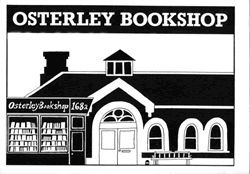|
The earliest wildlife in Osterley were elephants, rhinoceroses, lions (inter-glacial period), mammoths and polar bears (glacial period). Bones have been found all over the area from Southall to Isleworth. Early nomadic people from 440,000 years ago left hand axes, blades and flaked tools in Osterley.
In the Neolithic period (4500-2300BC) came settled agriculture (view Osterley Park and farmland) uninhabited in the main for all this time, but farmed continuously since) in the Neolithic period (4500-2300 BC) and the dropping of working tools – flint axes to cut back undergrowth etc.
Now fast forward to the Bronze Age (2300-650BC): a cinerary urn was dug up in Wood Lane by someone burying a pet dog. How odd that they chose the exact spot that someone had also chosen for a burial 4000 years ago!
During the Bronze/Iron Age (650BC-63AD) circular huts were erected, some of which had fortifying ditches and gullies to allow rainwater to drain off – possibly similar to the traces shown of aerial views of the farmland opposite Wyke Green golf course, but as these are as yet unexcavated (as is Wyke Green) they could be much earlier. Incidentally, an Iron Age settlement, including a probably very rare Iron Age temple is buried under Runway One at Heathrow Airport.
Forward again to the Roman occupation (AD43-410) – and what's 2343 years, give or take a couple of centuries in Osterley's timescale? Roman artefacts were found whilst building Tesco's (Osterley) and background traces, along with much earlier objects have, in the last year, been found whilst digging the foundations for a new school between Windmill and Wood Lanes. Remember Wood Lane? it popped up with a burial just 4000 years ago.
Which, with a mighty leap, takes us to the Medieval period (1066-1500). Isleworth, unusually, had two sub-manors (not a manor house, but a house belonging to a great landowner. In 1066 just 10 landowners owned 7/8 th of the county). Originally a ‘manor' was a piece of raised ground surrounded by a ‘motte' – moat. Here we are back again at Wood Lane and Wyke Green: One of these two great sub-manors, Wyke, on Syon Lane/Jersey Road, had a rectangular moat, circa 1100, which was cut through by the Piccadilly Line, and which survived on the South-eastern side until it was filled in a few months ago to ‘tidy up' the view of the new school and rugby club. Incidentally this now lost moat also marked the parish boundary between Heston and Isleworth. All over the country for many hundreds of years (with possible pagan origins) parishioners went ‘beating the bounds' with sticks, hitting the boundary (and the small boys who accompanied them to ensure they would remember where the boundary was). This Heston and Isleworth boundary-beating is on record a couple of hundred years ago as having resulted in an all-out fight between the Isleworth and Heston boys over territory (not a lot changed there then). A very tiny remnant of scrub – the only visible evidence of this moat can be seen to the northern extremity by an old brick wall beside the Piccadilly line cut. If you look further northwards towards Wyke Green you'll spot Seccombe's builders merchants, whose buildings constitute some of the original model farm buildings belonging to Wyke House (circa 1638), which sat on the site of the new school and was remodelled in 1778 by Robert Adam (he of Osterley House fame) when he was involved in the enlargement and redecoration of the house.
Time-travelling again, (circa 1440) this minute area of Wyke, Wyke Green and, close by, ‘Osterley Park' has exposed traces of three moats – astonishing for such a tiny area, which, to the naked eye, looks like a small trace of unspoiled countryside.
People have lived, laughed, loved, worked and built on this little plot for 442018 years … and its relationship to Osterley Bookshop's September Sale? None, except we've been here for fifty years, a tiny footprint in the saga of Osterley.
Visit us from the 1st to the 30th September when all our books, including first and out-of-print editions will be reduced to half price to make way for incoming stock, before we, like you, vanish into the mists of time (as they say in the corniest of novels).
Easy parking (half hour free, and no charges on weekends). Only 10 mins by car and 15 by bus from Chiswick. Seven days 9.30-5-30. Situated in the old railway station opposite Osterley Park entrance, 168A Thornbury Road, Osterley, TW7 4QE. Tel: 020 8560 6206
Advertisement
August 15, 2018
